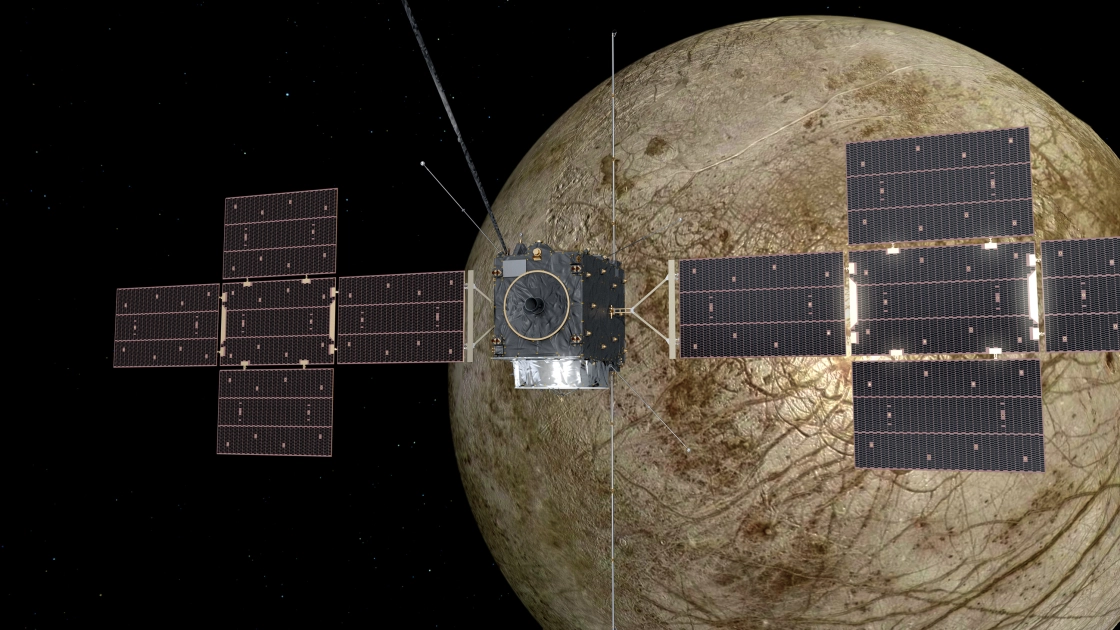JUICE Will Soon Launch To Jupiter's Cold Ocean Worlds
JUICE will soon launch to Jupiter's cold ocean worlds. On April 13th, 2023, the European Space Agency (ESA) launched the Jupiter Icy Moon Explorer (JUICE) mission, an ambitious endeavor to study the largest planet in our solar system and its icy moons.
Author:Rhyley CarneyReviewer:Paula M. GrahamApr 14, 202310.7K Shares143.1K Views

JUICE will soon launch to Jupiter's cold ocean worlds. On April 13th, 2023, the European Space Agency (ESA) launched the Jupiter Icy Moon Explorer (JUICE) mission, an ambitious endeavor to study the largest planet in our solar system and its icy moons.
The mission is expected to arrive at Jupiter in 2030 and spend three and a half years studying the gas giant and its satellites.
Jupiter is a fascinating planet that has intrigued scientists for centuries. It is the fifth planet from the sun and the largest planet in our solar system.
Its massive size and strong gravitational pull have influenced the orbits of other planets, and it has a complex system of rings and moons. Jupiter's four largest moons, Io, Europa, Ganymede, and Callisto, are known as the Galilean moons, named after their discoverer, Galileo Galilei.
Jupiter is also a planet of extremes. It has the shortest day of any planet in the solar system, with one day lasting just under 10 hours. Its atmosphere is also incredibly turbulent, with winds that can reach speeds of over 600 kilometers per hour.
The planet also has a powerful magnetic field, which creates intense radiation belts around the planet. These radiation belts pose a significant challenge for any spacecraft that attempts to study Jupiter and its moons.
The JUICE mission aims to study the Galilean moons, with a particular focus on Europa and Ganymede. Europa is of particular interest to scientists because it is believed to have a subsurface ocean of liquid water, making it a prime candidate for hosting life.
Ganymede, on the other hand, is the only moon in the solar system with its own magnetic field, making it an ideal location to study the interactions between a moon's magnetic field and Jupiter's powerful magnetic field.
The JUICE mission is the first mission to Jupiter by the ESA and is one of the most ambitious space missions ever undertaken. The spacecraft will travel over 600 million kilometers to reach Jupiter, and it will take six and a half years to get there.
Once it arrives, the spacecraft will use its suite of scientific instruments to study Jupiter's atmosphere, magnetosphere, and auroras. It will also study the Galilean moons, taking detailed measurements of their composition, geology, and structure.
The spacecraft itself is a marvel of engineering. It is powered by solar panels and will use a gravity assist from Venus and Earth to help it achieve its final trajectory to Jupiter.
The spacecraft is equipped with a high-gain antenna, which will allow it to communicate with Earth from Jupiter's orbit. It also has a suite of scientific instruments, including a high-resolution camera, a magnetometer, and a spectrometer.
The JUICE mission is a collaborative effort between the ESA and several other space agencies, including NASA, which is providing the spacecraft's radar instrument. The mission will also involve collaboration with ground-based telescopes, which will be used to provide complementary data to the spacecraft's measurements.
The JUICE mission is an important step forward in our understanding of Jupiter and its moons. It is also a significant technological achievement, demonstrating the ability of humans to explore the outer reaches of our solar system.
The mission is expected to produce a wealth of new data that will help us understand the origins and evolution of the solar system, as well as the potential for life beyond Earth.
Final Words
The JUICE mission is a remarkable achievement in space exploration, demonstrating the capabilities of modern spacecraft and the collaborative efforts of international space agencies. The mission will provide us with new insights into the mysteries of Jupiter and its icy moons, and it will pave the way for future missions to explore the outer reaches of our solar system.
It is an exciting time for space exploration, and the JUICE mission is a testament to the boundless curiosity and drive of humanity to explore and discover the unknown. The knowledge gained from this mission will contribute to our understanding of our place in the universe and could potentially lead to significant scientific advancements.
Jump to

Rhyley Carney
Author

Paula M. Graham
Reviewer
Latest Articles
Popular Articles